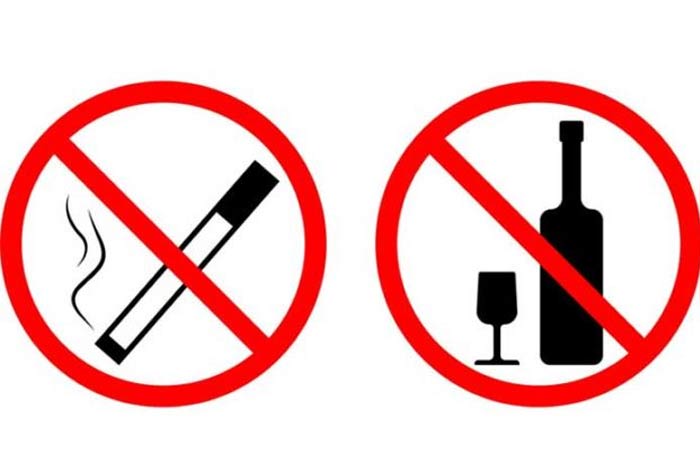
Panic Disorder is a type of anxiety disorder, characterized by panic attacks, lasting for several minutes or longer. Panic attacks are sudden intense episodes of fear and discomfort, that peak within 10 minutes and then gradually subside. Usually panic attacks occur once or twice in a lifetime and resolves on termination of the fearful trigger factor. However, when recurrent unexpected panic attacks occur, instilling a constant fear of developing another episode, the person is said to have a panic disorder.
As per recent statistics by Anxiety and Depression Association of America, approximately 6 million adults or 2.7% of Americans have panic disorder in a year. [1] It usually begins in the late teen or early adulthood and affects more women than men.
Panic disorder is not a life-threatening condition. However, it may be very distressing for an individual to experience such recurrent panic attacks and constantly live in a fear of developing another attack. Panic attack can be a frightening situation for an individual.
During these attacks, a person feels terrified and overwhelmed due to an unknown fear, making a person feel like he/she is losing control. Panic attack may also cause physical signs and symptoms, such as a rapid heartbeat and sweating, thus appearing like a heart attack.
If left untreated, panic disorder can lead to development of phobia. Phobia is an exaggerated, unreasonable fear to something specific, such as fear of heights, spiders, etc. One such severely disrupting phobia is agoraphobia. A person is said to have agoraphobia, when he/she avoids situations which inflict fear. Such individuals refrain from going to places, where immediate escaping seems difficult, such as extremely open places (e.g. parking lot) or closed spaces (e.g. theaters). [2] Hence, panic disorder can severely hamper a person’s independence to lead a good quality life.
However, with proper treatment, panic disorder can be easily managed. Medical intervention can significantly improve the quality of life of an individual suffering from panic disorder.
Symptoms
Panic attack is the chief symptom of panic disorder. These attacks can occur suddenly, at any time, without any warning signs and symptoms, such as during driving or immediately after waking up, etc. These attacks last for minutes to hours and once they subside, patient feels drained or exhausted.
According to Anxiety and Depression Association of America, panic attacks are sudden intense fear that reaches peak within minutes and consist of at least four of the following symptoms. [3]
- Pounding or increased heart rate, medically termed as palpitations
- Sweating
- Shaking or trembling
- Feeling short of breath
- A choking feeling
- Chest discomfort or pain
- Abdominal distress or nausea
- Light-headedness, or feeling dizzy or unsteady
- Feeling cold or hot
- Tingling sensation or numbness (medically termed as paresthesia)
- Feeling of unreality (i.e. derealization) or feeling detached from oneself (i.e.
- depersonalization)
- Loss of control
- Fear of death
However, some patients may clinically show a full-blown panic attack, but present with less than four of the above stated symptoms. These patients are said to exhibit “limited-symptom panic attacks”.
Although panic attacks are the most significant feature of panic disorder, it is important to understand that not all panic attacks are suggestive of a panic disorder. A person is said to have a panic disorder when he/she experiences at least 2 panic attacks without any apparent reason, followed by at least 1 month of fear of onset of another attack. [4] 1 in 10 U.S adults experience panic attack every year. But, only 3 per cent of these adults develop panic disorder.
Also, panic attacks can be suggestive of other mental health disorders, such as social anxiety disorder, obsessive-compulsive disorder , PTSD etc.

Risk factors
There are various risk factors that predisposes an individual to develop panic disorder.
1. Gender
It has been seen that panic disorder affects women, twice as much as men.
2. Age
As per recent research, the median age of onset of panic disorder is 24 years. [5] It usually begins in teen and early adulthood.
3. Family history
An individual who has relatives suffering from panic attacks or panic disorder, is at a higher risk of developing panic disorder.
4. Stress
Major stressful events in life, such as death of a closed one, etc. can also predispose an individual to panic disorder.
5. Traumatic event
A traumatic event, such as a major accident, can also increase the chance of developing panic disorder.
6. Drastic life change
A sudden drastic change in life, like a divorce can also put an individual at a higher risk of developing panic disorder.
7. Past event
A history of dreadful events in the past, such as physical or sexual abuse can also heighten the risk of panic disorder in the effected people.
8. Caffeine, Smoking, Alcohol and drugs
The risk of developing panic disorder is more in people who consume excessive caffeine or people who are hooked to cigarettes, alcohol and drugs.

Do I have it?
If an individual gets bouts of anxiety attacks and is always fearful of another attack, he/she is most likely suffering from panic disorder.
If a parent notices such symptoms in a child, who avoids going to school, it raises a strong suspicion of panic disorder.
A person experiencing these symptoms along with presence of risk factors such as a strong family history or a recent physical or emotional trauma, should consider panic disorder to be the likely cause.
Such recurrent panic attacks with social withdrawal, is suggestive of a neglected panic disorder which has progressed to development of phobia.

Causes
The exact cause of panic disorder is unknown and is still a matter of active research. However, several causative factors have been implicated in panic disorder, as stated by National Institute of Mental Health. [6] These are described below.
1. Genetics
It is a well-known fact that panic disorder is carried in genes. But, it is still not known, why some family members acquire it, while others don’t.
2. Stress
It has been seen that stress can be a major causative factor in panic disorder. However, the exact association is unknown and is a subject of interest for researchers.
3. Brain function
Some researchers say that a change in brain physiology and function, causes panic disorder. Human brain plays a key role in combating stressful situations. This is known as “Fight-or-flight” response. Researchers suggest that the patients of panic disorder have a sensitive fight-or-flight response, i.e. they respond fearfully to harmless objects and situations.

Prevention
There is no definitive way to prevent panic disorder. However, certain preventive measures may help. These are as follows.
- Know your family history: A relative with this condition increases the risk of developing panic disorder. Hence, know your family history and recognize the condition early.
- Seek help for panic attacks: Early recognition and treatment of panic attack, can prevent it from progressing to a state of panic disorder. If a person experiences a panic attack, do not ignore it. Seek immediate help, before it worsens.
- Abstinence from alcohol, drugs, caffeine and smoking: Completely refrain from consuming alcohol and reduce caffeine consumption. Smoking and drug abuse should be strictly avoided as all these factors increase the risk of developing panic disorder.

Diagnosis
Panic disorder poses a challenge in diagnosis, as it mimics several other health conditions. The fearful symptoms, seen in panic disorder may appear similar to other anxiety disorders, such as generalized anxiety disorder , etc.
Most patients feel embarrassed to share their symptoms with anyone, including medical professional, thinking that he/she may be considered a hypochondriac (one who constantly lives in a fear of developing a serious illness). However, physical signs seen in panic disorder, such as palpitations, tremors and sweating causes major discomfort and prompts the patient to visit a doctor. These signs are often confused with symptoms of cardiovascular conditions or thyroid hormone imbalance
Hence, to combat these diagnostic challenges, a specialist known as psychiatrist is needed to correctly diagnose and treat the condition.
There is no specific test to diagnose panic disorder. However, certain diagnostic modalities have been shown to assist in appropriate diagnosis.
1. Recording a thorough history
When a patient visits a doctor, mostly with chief complaints of palpitations and tremors, doctor takes a thorough history of the patient’s symptoms. Details, such as frequency and intensity of symptoms are recorded. This helps the doctor in establishing a provisional diagnosis.
2. Physical exam
Doctor examines the patient to look for signs of any physical or sexual abuse, which may be the causative factor.
3. Blood tests
Once the doctor has thoroughly examined the patient, certain blood tests are ordered to locate the exact cause. These tests include thyroid tests and tests to assess cardiovascular health of an individual, such as electrocardiogram (ECG).
4. Psychological assessment
Once the doctor has ruled out all other health conditions that can cause such symptoms, patient is referred to a psychiatrist. A psychiatrist obtains details of symptoms of the patient, through verbal conversation, self-assessment forms or questionnaire. This aids in evaluating the mental health of the patient and severity of the condition. This specifically helps in localizing the trigger factor that inflicts fear in the patient and evokes a panic attack.
Once the psychiatric assessment is done, the diagnosis of panic disorder is made, if the symptoms fulfill the diagnostic criteria laid down in DSM-5 (Diagnostic and Statistical Manual of Mental Disorders-5th Edition), published by American Psychiatric Association. These criteria are as follows.
- Frequent, unexpected panic attacks
- At least one of the attack has been followed by a period of constant fear of another attack, lasting for one month or more.
- Panic attacks are not being caused by other causes such as alcohol or drug abuse, medical condition or other mental health disorders, such as OCD or social phobia.
Treatment of Panic Disorder
Panic disorder can be easily treated. The goal of treatment should be complete elimination of panic attacks. Various treatment methods are available to effectively reduce the frequency and intensity of the panic attacks. The choice of treatment depends on the severity of patient’s symptoms and individual preferences.
National Institute of Mental Health recommends the following treatment methods for panic disorder. [7]
1. Cognitive Behavioral Therapy (CBT)
It is a type of psychotherapy or talk-therapy. It is used as a first-line treatment in patients of panic disorder. This therapy aims at recognizing the factors that cause panic attacks. Therapist asks the patient to re-create the symptoms of a panic attack. This exercise alters the perception of the patient to the trigger factors, thus eliminating the onset of future attacks. Although it is a time-consuming therapy with no instant results, it is highly effective.
2. Medications
Medications may be prescribed to relieve the symptoms associated with panic attack. Various medications that are used, are described below.
- Selective Serotonin Reuptake Inhibitors (SSRIs): These drugs belong to a class of drug, known as anti-depressants. These are usually used as a first-choice drug in the treatment of panic disorder. SSRIs effectively treat anxiety and depression (if present), associated with panic disorder. Examples include fluoxetine and sertraline.
- Serotonin and Norepinephrine Reuptake Inhibitors (SNRIs): These also belong to anti-depressant class of drug. Examples include venlafaxine and duloxetine.
- Benzodiazepines: These are sedative drugs, which can rapidly relieve the symptoms of panic attack. However, these are prescribed for a short-term basis as the patients on benzodiazepines tend to develop tolerance and dependence to the medication. Examples include alprazolam and clonazepam.
- Beta-blockers: These are prescribed to relieve the physical signs seen in panic disorder, namely tachycardia and palpitations. However, they are not commonly used.
Although psychotherapy alone can effectively treat the symptoms, a combination of medications and psychotherapy may be used.
However, it must be remembered that every patient is different. So, every patient may respond differently to the treatment approach. Hence, it may take time to identify the most effective treatment method for each patient.
Also, medications may take weeks to show symptomatic relief. Thus, adequate time and patience is necessary to treat the disorder.

Care
Recurrent panic attacks and constant anticipation of worsening consequences, can make a person lead an exhausting life. Hence, emotional and mental support forms an integral component of treatment of panic disorder.
Most patients of panic disorder, are living in denial. They tend to overlook the symptoms and prefer not to express their feelings to even closed ones. Hence, if family and peer notice any behavioral change and social withdrawal in an individual, it is important to reach out to the patient and assure him/her that the condition is manageable.
Family and peers should help the patient in de-addicting from drugs, alcohol and cigarette smoking. Caffeine intake should also be reduced in these patients.
Patients of mental health disorder, are embarrassed to seek treatment for their condition and tend to miss doctor’s appointments and skip medications. Thus, family and peers should make sure that patients are attending therapy sessions and taking medications on time.
The most significant point here is that effective treatment of the symptoms may take time. Thus, it is important that family and peers keep reinforcing the fact that panic disorder is not a fatal condition and can be easily managed.

OTC Available for Panic Disorder
The medications used to treat panic disorder, can have major side-effects and hence, are available only on a doctor’s prescription.
However, research has shown that inositol (a vitamin-like substance) supplementation can relieve the panic attacks by balancing the chemical imbalance in the body. The role of B-complex vitamins in relieving anxiety has also been seen. Minerals such as calcium and magnesium also produce an anti-anxiety effect.
Self-Management Methods
Although panic disorders invariably require professional help, various self-management methods can hasten the recovery and improve the long-term mental state of the patient. These are as follows.
Attend the therapy sessions regularly
Psychotherapy forms a chief treatment modality in panic disorder. Hence, patients must accept their disorder and must attend the therapy session regularly. It is important to express feelings to the concerned therapist, in order to effectively counteract the panic attacks.
Adhere to the prescription
Medications may take several weeks to show the effects. Hence, patients tend to skip medicines, thinking they are inefficient. It is important to understand that sticking to the prescribed medicines is necessary to produce desirable results.
Avoid caffeine, alcohol, smoking and drugs
These factors not just trigger a panic attack, but can also worsen the symptoms. Hence, patients must avoid them to avoid future attacks.
Join Support groups
Support groups consist of people dealing with similar day-to-day hardships and are led by an individual, who has successfully overcome the disorder. Hence, joining such groups provides a moral boost and helps in learning ways to deal with the panic attacks.
Stress management and relaxation techniques
Stress is a major causative factor in panic disorder. Hence, patients must include various stress management and relaxation techniques in daily life. These include deep breathing, yoga and progressive muscle relaxation (a process of tensing and relaxing various muscles of the body).
Exercise
It is a well-established fact that physical activity is effective in managing moods. Hence, maintaining an active lifestyle is important.
Get adequate sleep
Getting adequate sleep helps in relieving the symptoms of panic disorder.

Natural Ways to Cure Panic Disorder
Other than conventional approach, various natural methods have also been advocated in the treatment of panic disorder.
1. Well-balanced diet
A poor diet can have a deleterious impact on a person’s mood. Hence, eating a well-balanced nutritious diet can relieve the anxiety symptoms associated with the disorder. Healthy fats, lean protein and unrefined carbohydrates should be included in the diet. Adding food rich in Vitamin B (such as eggs, milk, fish, etc) and magnesium (such as beans, nuts and green leafy vegetables) is recommended. Foods with high calcium (like cheese and yogurt) and omega-3 fatty acid (such as chia seeds, walnut, etc.) content should be consumed.
2. Avoid foods with high glycemic index
Research has shown that food with high glycemic index can worsen the anxiety symptoms. These include sugary and processed foods. Avoid consumption of such food to feel energetic throughout the day.
3. Ashwagandha
It is a natural herb that helps alleviating symptoms of anxiety in panic disorder.
4. 5-hydroxytryptophan (5-HTP)
It is a naturally occurring amino acid which helps in synthesis of a brain chemical, known as serotonin. Serotonin has a calming effect on the brain. Hence, 5-HTP supplements can be of great advantage in panic disorder.
5. Gamma aminobutyric acid (GABA)
It is a brain chemical that produces an anxiolytic effect. It can be consumed in the form of supplements. A naturally occurring herb, called valerian root increases the GABA levels of the brain and helps relieve symptoms of panic attack.
6. Essential oils
Lavender oil and Roman chamomile oil have a calming effect and relieve anxiety in panic disorder. These oils can be applied topically or inhaled to produce a soothing effect.
However, it must be remembered that alternative medicine can only complement the effects of conventional medicine. Hence, do not stop the prescribed medications and conventional therapy, without consulting doctor.
These natural remedies may interfere with the conventional treatment plan, hence should be started only after discussion with doctor.

Health Tip by Experts
According to health experts, panic disorder is a manageable condition and aiming for a complete eradication of panic attacks is reasonable. Hence, patients must stick to the prescribed medications and attend therapy sessions regularly. Patients must face their fears and talk about them to the therapist. Do not indulge in any abusive habit. Incorporate some healthy lifestyle changes and manage stress levels.





